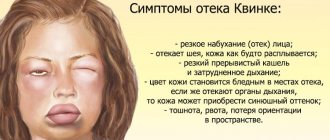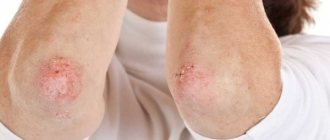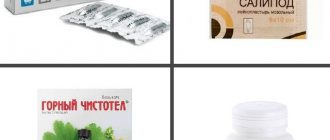In general, food allergies to fish are more common in areas where fish dishes have become a tradition.
Based on numerous studies, scientists were able to establish the chemical structure of the fish allergen. The main culprit in fish allergies was identified as parvalbumin, a muscle protein that is present in most species of fish, shellfish, mussels, lobsters and other inhabitants of the deep sea.
Fish antigen is a powerful allergen that causes immediate allergic reactions. Even a small fragment of this antigen molecule can trigger a food allergy to fish protein.
Parvalbumin is resistant to digestive juices and heat treatment. In other words, you may be allergic to smoked fish, both raw and dried fish.
It should be noted that allergic reactions occur much more often to sea fish: river fish and fish living in lakes are less likely to cause allergies.
There are also food allergies to caviar, especially red caviar. But allergic reactions to fish oil occur very rarely.
Can there be an allergy to fish and why does it appear?
- The cause of allergy to fish is a specific protein contained in its muscles - parvalbumin. This substance belongs to the category of strong allergens and is not destroyed during heat or salt processing of fish products. Provided the immune system is functioning normally, parvalbumin does not cause any unpleasant symptoms, but for people prone to food allergies, it can cause a lot of problems.
- Also, the causes of allergies to river and sea fish include an atypical reaction to the products of their vital activity - excrement and special mucus covering the scales. If they are not carefully removed and get into food or onto the skin of your hands unprotected by gloves, an allergy may develop.
- An allergic reaction may occur in response to the chemicals that the fish was treated with during cooking. Recently, more and more manufacturers of smoked products do not use the classical technology of cold or hot smoking. Instead, so-called liquid smoke is used - a chemical substance containing purified condensate particles obtained from the smoke of certain types of wood.
- Manufacturers claim that fish smoked with liquid smoke is safer and less likely to cause allergies than traditionally smoked fish. However, some nutritionists and doctors tend to think differently: liquid smoke can cause severe allergic reactions. In this case, there is no allergy to fish protein, but an atypical reaction to liquid smoke does occur.
- Another reason that can provoke the appearance and development of fish allergy in an adult or a child is the use of dyes, flavor enhancers and preservatives in finished products. This is especially true for salmon: some manufacturers artificially improve the color of their products by adding dyes to them - this can cause an allergy to red fish. Therefore, before purchasing, carefully study the composition of the fish dish.
Allergens in fish products
The main allergen in fish is a protein called parvalbumin, which is found in the muscle system of fish.
It is contained in large quantities and cannot be completely removed during processing, so allergies also appear to fish after thermal exposure (cold, heating).
This protein causes 40% of allergic reactions to fish products.
Other types of allergens:
- Harmful substances found in fish. People who breed fish can add various substances to their food that increase their growth rate. And fish from open reservoirs accumulate toxins contained in the water (industrial waste, toxic fertilizers from the soil).
- Long shelf life of the product. If fish has been stored for a long time, it accumulates scombrotoxin, which is resistant to temperature and salting.
- Parasites. If the fish given to your child contains parasites, an allergic reaction may occur to them. This is also fraught with the development of parasitic diseases, so it is important to carefully process the product.
- Histidine. There is no parvalbumin in the tuna muscle system, but there is histidine, an amino acid. It is this that causes an allergic reaction in people who eat this type of fish.
Fish allergy: symptoms
The first signs of an allergic reaction to fish and seafood usually appear within an hour after eating these dishes.
- Dry rashes are observed on the skin, accompanied by severe itching, redness and swelling. If no action is taken to promptly treat a fish allergy, a dry rash may give way to a weeping one, which can lead to infection.
- The mucous membranes react with a tingling sensation and the appearance of swelling in the area of the lips and eyelids, which can cause the development of Quincke's edema. Watery eyes, allergic rhinitis, and sneezing may also occur.
- If a person prone to allergies inhales the vapors that rise into the air while cooking fish, he may develop a severe, dry cough, which can lead to difficulty breathing and an attack of suffocation.
Diarrhea due to food allergies
Researcher Kozyarin points out the high probability of diarrhea with food allergies: “If a person is not treated, then he may experience inflammation of the stomach and small intestine with abdominal pain and constant stool upset” (Kozyarin N.P., 2009, p. 66).
Allergies disrupt the frequency of bowel movements, with diarrhea observed for several days, which is often followed by constipation. This is not harmless, especially for people who already have intestinal problems.
Damage to the walls of the intestines and stomach leads to disruption of the processes of digestion and absorption of nutrients. If measures are not taken in a timely manner, thickening of the walls, a decrease in the intestinal lumen, and serious consequences in the form of persistent stool disorders and abdominal pain are possible.
An allergic reaction disrupts the balance of intestinal microflora . The mechanisms of influence of allergic processes on digestion are so diverse that independent gastroenterological diseases often develop, such as gastritis, peptic ulcers, and enzymatic deficiency in children. At the same time, treatment of these pathologies by a specialized specialist without adjusting the diet and taking measures to eliminate allergies is not always successful.
Diarrhea due to allergies can independently lead to complications - proctological pathologies, water-salt imbalance, and dehydration. Therefore, it is important to resort to symptomatic therapy before basic measures take effect.
Allergy to fish in a child
The tendency to be allergic to fish can be inherited. If one parent has an unusual reaction to this product, it will most likely be passed on to the child.
Since fish and seafood are strong allergens, the mother should refrain from them while breastfeeding (the same applies to the gestation period). It is advisable to produce the first fish feeding no earlier than 8-8.5 months. At first, it is advisable to give your baby pureed boiled fish of low-fat varieties (ideally river fish, as it is less likely to cause allergies) in small quantities, supplementing it with vegetable puree.
If a child has at least one of the food allergy symptoms described above, it is necessary to consult a pediatrician and an allergist as soon as possible.
Why is it dangerous?
Manifestations of allergies can be extremely severe, even life-threatening .
When in contact with fish, an allergic person may experience the following conditions:
- Quincke's edema. Severe swelling of the skin and mucous membranes is observed, and suffocation may occur. Also, in rare cases, cerebral edema develops, which can cause death or neurological complications.
- Anaphylactic shock. Often combined with Quincke's edema. It is accompanied by generalized itching, intensely manifested main allergic symptoms, severe difficulty in breathing until it stops completely, blue discoloration of the skin on the fingers, and fainting.
A child with anaphylaxis will die if he does not receive medical help, so in case of acute manifestations of allergies, you need to call an ambulance.
Fish allergy: symptoms in adults
In adulthood, the symptoms of fish allergy described above can be supplemented by asthma attacks if the person has asthma. This is especially true for the cooking process, when fish vapors rise into the air. We also must not forget that some building materials and adhesives contain flour obtained from fish bones: inhaling their fumes can also negatively affect your well-being.
Statistically, women are more susceptible to fish allergies compared to men. Cross-reactions to this product are also believed to occur more frequently in adults than in children.
Diagnosis
If there is a suspicion of an allergy, a person should make an appointment with an immunologist and allergist.
Doctors will prescribe tests that are carried out in different ways:
- Scratch method. Several scratches are made on the skin with a sterile needle, and the allergen is dropped onto them. If a lesion of more than 2 mm (redness and swelling) appears on the skin, the test is considered positive. Up to 20 samples are made in one place.
- Injection method. This refers to intradermal tests. The solution with the allergen is administered as an injection, then the reaction is assessed.
- Three days before the tests, it is necessary to interrupt the course of taking antihistamines.
If specialists cannot identify the allergen, then they begin to remove highly allergenic foods from the patient’s diet one by one and wait for the body’s reaction.
Fish that causes allergies
Most often, an unusual response from the immune system is observed in the case of eating sea fatty fish: it can be tuna, all representatives of the salmon family, eel, sea bass. Allergies can be caused not only by fish, but also by other seafood: squid, lobsters, shrimp, crabs, oysters, scallops, and so on. It is believed that among seafood, shrimp are especially dangerous for allergy sufferers: they contain two types of heat-resistant allergens (one is in the meat, the second is in the chitinous covering). River inhabitants can also cause allergies (especially catfish), but this happens less frequently.
What are the benefits of fish for a growing body?
Fish is a unique product, rich in a huge amount of vitamins and nutrients. The main one is fish protein, which is involved in the construction of not only the cells of the child’s body, but also the formation of antibodies to fight various viruses.
Fish contains a large number of useful substances
Fish contains fatty amino acids that the body cannot reproduce itself, but receives only from food. Its digestibility reaches 98% due to the absence of coarse fibers, complex fats and films, and soft fillet is easily digested by enzymes of the gastrointestinal tract. This product is also rich in vitamins and microelements that are necessary for the full development of the child:
- Omega-3 - without this fatty acid, proper metabolism in the body is impossible;
Fish is one of the few sources of omega-3 in the human body.
- vitamin D - helps the absorption of calcium and is involved in the growth of the child’s skeletal system and teeth;
- vitamins A and E - responsible for healthy vision and skin of the baby;
- vitamin B12 - plays a huge role in the development of the baby’s circulatory and nervous systems;
- iodine - it is called the element of the mind, it supports the proper functioning of the thyroid gland, is responsible for brain function;
- Selenium is an important trace element that helps the body develop strong immunity and also protects cells from the negative effects of toxins;
- Calcium plays a major role in the proper development of the child’s skeletal system and teeth. Its deficiency in children can lead to the development of rickets and skeletal deformation;
- iron and copper - regulate the level of hemoglobin in the blood;
- manganese - responsible for the normal growth of the child’s skeleton;
- phosphorus - necessary for tissue regeneration and child growth;
- magnesium - participates in protein synthesis in the body.
When to start introducing the product into the baby's menu
Fish is introduced into the baby's diet after cereals, vegetables, fruits, juices and meat. Early feeding with this product can cause an allergic reaction. Pediatricians recommend giving your child fish puree from 9–10 months, and if the baby suffers from allergies, then from one and a half years .
Fish protein is a strong allergen, so children with allergies try fish much later than healthy children.
Fish, like any other product, is introduced into the child’s diet gradually, starting with half a teaspoon (5–10 grams), increasing by the year to 60–70 grams per day, no more. Parents should know that fish broth should not be given to children under three years of age, so if the product is boiled, it is removed from the water, ground in a blender, and only then offered to the child to try.
Fish allergy treatment
For a speedy recovery, it is recommended to completely eliminate fish products from consumption. Please note: if other members of your family do not suffer from a similar reaction and you are preparing fish dishes only for them, always use gloves and wash dishes thoroughly after preparing food.
In order to quickly remove substances to which you are intolerant from the body as quickly as possible, you need to take a course of enterosorbents - activated carbon, enterosgel. To treat skin manifestations, antihistamines and anti-inflammatory ointments and creams are used, and hormonal drugs are used to combat swelling of the mucous membranes and larynx.
Fish oil intolerance
Fish oil perfectly replenishes the body's need for vitamin D and essential fatty acids, but can cause allergic reactions and pseudo-allergies in children.
Fish oil contains the same substances that cause allergies when eating whole fish, so this drug is contraindicated for a child with hypersensitivity to fish products.
Also, symptoms similar to an allergic reaction can be observed in young children when consuming fish oil. This is due to the immaturity of their digestive system. Fish oil is rarely prescribed to children under five to seven years of age .
Clinical researches
The effectiveness, safety and tolerability of the product for children and adults has been proven by a clinical study. The products are also suitable for daily skin care for children with mild to moderate forms of atopic dermatitis and during remission, accompanied by a decrease in the quality of life of patients. As a result of therapy, a decrease in the activity of the inflammatory process, a decrease in dryness, itching and flaking was noted.
La-Cri cosmetics, according to research results, are recommended by the Russian Union of Pediatricians.
Sources:
- Yukhtina N.V., Modern ideas about atopic dermatitis in children
- Kamasheva G.R., Khakimova R.F. Valiullina S.A., Methods for assessing the severity of atopic dermatitis in young children, Dermatology journal, 2010
- G.V. Molokova, E.V. Bukina, Diaper dermatitis in children with sensitive skin, Journal of Dermatology and Allergology, 2019
- N.L. Rybkina, Modern approaches to newborn skin care: pediatrician tactics, journal Bulletin of Modern Clinical Medicine, 2014
Photos of allergies in children
Photo album on the diseaseDiagnostics
The main task of doctors when diagnosing an allergy is to determine what exactly triggered it and to distinguish it from diseases with similar symptoms. To do this, the following diagnostic measures are indicated:
- determination of the concentration of specific antibodies (immunoglobulin E) in the child’s blood;
- skin tests (various allergens are applied to the child’s skin);
- provocative tests (the child eats a small amount of fish in the presence of a doctor);
- analysis of stool.
Keeping a diary may also be indicated , in which you need to write down everything that the child eats and indicate how the body reacts to it.
When the allergen is found, treatment begins.
How to properly cook fish for complementary feeding
Your child can be given boiled or steamed fish. The baby’s gastrointestinal tract is not yet able to digest smoked or fried products.
Before cooking, rinse the carcass well under running water. How long you need to cook fish on the stove or in a slow cooker depends on its type:
- for mackerel, pollock, pike perch, pangasius, an average of 10 minutes is enough;
- trout, perch, pink salmon are ready to eat after 15–20 minutes;
- Cod, pike, sturgeon and carp undergo the longest heat treatment (from 20 to 40 minutes).
The fish should be steamed for 10–15 minutes longer. Cooking and steaming times also increase if you are cooking a whole fish rather than a piece. Before offering the dish to your child, you need to check that there are no bones in the fillet.
Puree for the first fish feeding
You can start getting acquainted with fish with the easiest recipe:
- boil a low-fat fish in water or steam it;
- grind the fillet in a blender;
- add potatoes or cauliflower to the fish and also mix with a blender;
- give to the child warm.
Fish puree is easy to make at home
Fish pudding with vegetables
Tender pudding can be prepared for a baby after 12 months:
- Boil 300 grams of fish fillet for 15 minutes;
- grind in a blender;
- add 150 grams of mashed potatoes and one raw chicken egg;
- mix all ingredients thoroughly with a blender;
- Transfer the fish and potato mixture into a mold and steam for 30 minutes.
Fish pudding for children is a delicious and favorite dish for many
What types of fish can be given to infants and which cannot?
Doctors recommend starting fish feeding with low-fat marine varieties: rivers are more polluted than seas and oceans, so river fish absorbs more toxins. But freshwater inhabitants are not prohibited either; you can try cooking trout, pike or pike perch for your child.
Protein and fat content in fresh fish - table
| Type of fish | Per 100 g | Per serving (200 g) | ||
| squirrels | fats | squirrels | fats | |
| Tuna | 24,4 | 4,6 | 48,8 | 9,2 |
| Sea trout | 21 | 7 | 42 | 14 |
| River trout | 21 | 5 | 42 | 10 |
| Pink salmon | 20,5 | 6,5 | 41 | 13 |
| Salmon | 20 | 13 | 40 | 26 |
| tilapia | 20 | 2 | 40 | 2 |
| Pollock | 19,9 | 0,9 | 39,8 | 1,8 |
| Flounder | 19,7 | 3 | 39,4 | 6 |
| River perch | 18,5 | 0,9 | 37 | 1,8 |
| Zander | 18,4 | 1,1 | 36,8 | 2,2 |
| Pike | 18,4 | 1,1 | 36,8 | 2,2 |
| Sea bass | 18,2 | 3,3 | 36,4 | 6,6 |
| Mackerel | 18 | 14 | 36 | 28 |
| Bream | 17,1 | 4,4 | 34,2 | 8,8 |
| Hake | 16,6 | 2,2 | 33,2 | 4,4 |
| Cod | 16 | 0,6 | 32 | 1,2 |
| Carp | 16 | 5,3 | 32 | 10,6 |
Ready-made fish puree
Fish purees along with vegetables are available for sale from various baby food manufacturers. If you have doubts about the quality of the fish being sold, it is better to buy ready-made fish that have been certified and approved for consumption by infants.
If you decide to cook fish yourself, be sure to check the quality of the product, ask the sellers for certificates and sanitary and epidemiological reports, because the health of your baby depends on this. Pediatricians recommend buying fresh product; frozen fillets contain fewer vitamins and minerals.
Fish purees from different manufacturers - photo gallery
Heinz Fish Purees are suitable for children aged 8 months and older.
Fish purees Babushkino Lukoshko are intended for children from 8 months
Fish puree Sami with mustache is intended for children from 8 months
Fish and chips and fish with vegetables from Hipp for babies from 8 months
Noodles with sea fish and vegetables in creamy sauce from Hipp for babies from 9 months
Pasta with sea fish and vegetables in tomato sauce from Hipp for babies from 12 months
Fish puree Semper for children from 9, 10 and 11 months
Fish purees Semper for children from 12 months
Fish purees Semper for children from 18 months








